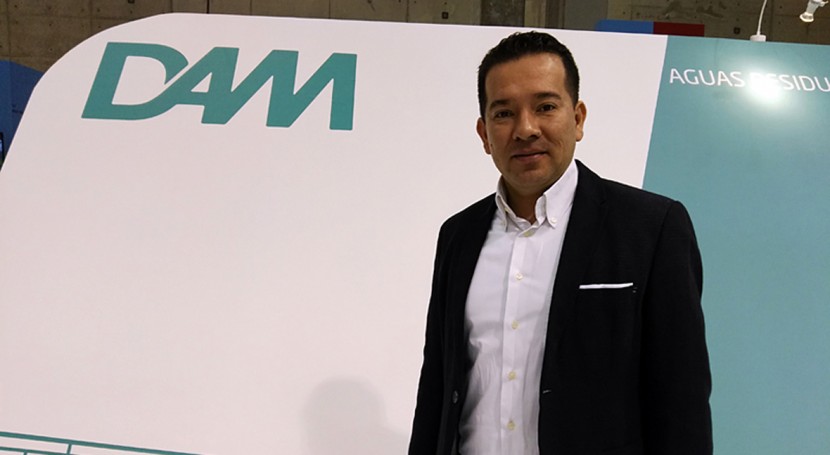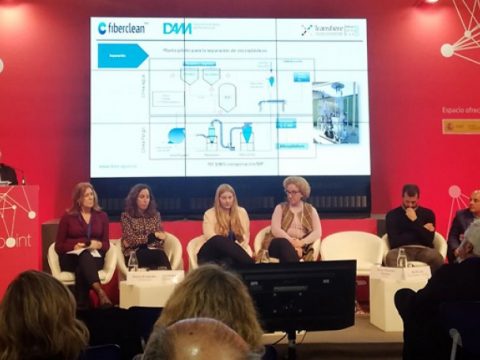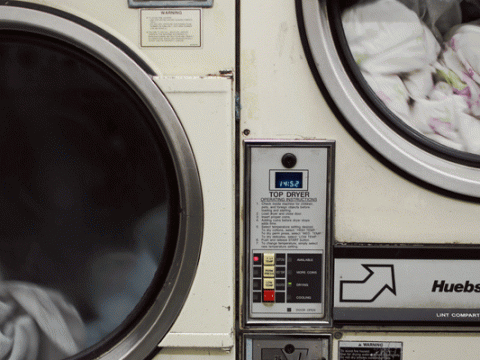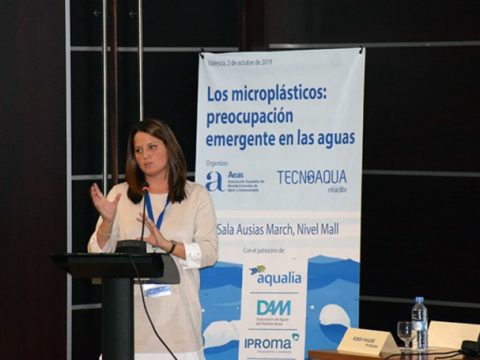
The end of polluting tissues is near
7 March 2019
“It is necessary to study the presence of microplastics in the WWTP”
6 October 2019On the occasion of June 8, World Oceans Day, we spoke with the researcher from DAM (Purification of Mediterranean Waters), Javier Eduardo Sánchez, about the work and main aspects that are being developed in the FIBERCLEAN project. The study will be presented next week at “The 16th IWA Leading Edge Conference on Water and Wastewater Technologies”, which is held in Edinburgh, Scotland.
Javier Eduardo Sánchez studied Chemical Engineering at the Industrial University of Santander (Colombia), to later expand his training with the Master’s Degree in Hydraulic and Environmental Engineering from the Polytechnic University of Valencia (UPV). He has a PhD in Chemical, Environmental and Process Engineering from the University of Valencia (UV) and has experience in research, coordination and monitoring of national and European projects related to wastewater treatment, anaerobic digestion, nutrient recovery and economy circular.
Question: The Fundéu BBVA Foundation chose “microplastic” as the word of the year 2018, what relationship does this term have with the FIBERCLEAN project?
Answer: The FIBERCLEAN project seeks to identify various technological solutions that allow reducing the amount of microfibers and microplastics throughout the value chain of the textile industry, from the manufacture of new yarns, fabrics and products. We want to develop new technologies for the elimination or reduction of microfibers during washing and in water purification processes.
Q.- Why is the study of microplastics in WWTPs (Wastewater Treatment Stations) a challenge?
A.- The main challenge focuses on the separation of microplastics and their subsequent identification and quantification. We must bear in mind that the WWTP receives wastewater containing a wide variety of particulate material, including microplastics with sizes less than 5mm, which in some cases are retained in the sludge line and in others, pass through from the water line and are discharged to the receiving media.
Until now, the few studies carried out in WWTP have detected various types of microplastics, (mostly synthetic fibers and particles) present in the tertiary effluent of a WWTP. The next step is the correct identification and quantification of them.
“The study will implement a pilot plant that allows the separation of microplastics and fibers in the water and sludge line of the WWTP”
Q.- Specifically, what does the water treatment that is being developed consist of?
A.- In relation to wastewater treatment, the study is focused on the separation, identification and quantification of fibers and microplastics in WWTP. To this end, new microfiber retention and separation techniques are being studied in the main water and sludge line of the WWTP. Another important aspect that is being evaluated in the project is the isolation of microbial strains capable of degrading microplastics.
To validate the different techniques studied on a laboratory scale, the implementation of a pilot plant that combines various physical-chemical processes is planned, which will allow the separation of microplastics and fibers in the water and sludge line of a WWTP.
“We are working on the identification of microorganisms capable of degrading microplastics”
Q- What are its main advantages?
A.- The main advantage is the development and validation of new techniques for the separation, recovery and degradation of microfibers and microplastics in WWTP. This will make it possible to reduce the discharge of these particles into the receiving environments (rivers, seas or lakes).

Q.- In general terms, what is the work carried out so far in the investigation?
A.- DAM in collaboration with the LEITAT technology center, is carrying out an evaluation of the parameters that allow us to know the behavior of microplastics within the water purification process. In addition, it is analyzing on a laboratory scale, the main variables that affect the separation of microfibers and microplastics in wastewater and sludge from WWTP.
On the other hand, we are investigating various techniques that help to identify and quantify these particles. Lastly, work is being done to identify microorganisms capable of degrading microplastics, isolating various strains with the potential to degrade plastics and microplastics.
“FIBERCLEAN will improve the quality of the treated wastewater and, in turn, will reduce the negative impact on aquatic organisms”
Q.- What will be the main social and environmental impact of the FIBERCLEAN project?
A.- The FIBERCLEAN project will help reduce the presence of microplastics in the receiving environments, ensuring a better quality of the treated wastewater and reducing, in turn, the negative impact on aquatic organisms.
On the other hand, the development of these projects allows awareness of this problem, increasing the knowledge of society, researchers, students and new professionals. In addition, it directly and indirectly promotes training and encourages job creation at all stages of the project.
“The pollution of the oceans is a global problem and the contribution of each one of us with small gestures, will help to reduce its impact”
Q.- On a personal level, how should a global problem such as contamination by microplastics be tackled?
A.- I believe that awareness on this issue is important. In fact, the main government agencies have been working in this line, making the problem known worldwide and causing a radical change in thinking and actions in new generations.
The responsibility belongs to everyone since in our daily routines we incorporate a multitude of products that are associated with plastics and microplastics. For now, the alarms have already gone off and many institutions have begun to take action. Researchers are working on the development of new processes and products to reduce this problem.




